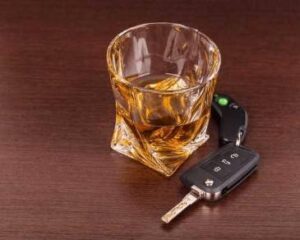There are a lot of myths surrounding drinking and driving. One of the most common is that one drink an hour will keep your BAC below the legal limit but is this true? Let’s take a look.
What Is the One Drink an Hour Rule?
Many people follow the “one drink an hour rule” to avoid going over the blood alcohol content of 0.08%. Essentially, the one drink per hour rule means that as long as someone only consumes 1¼ ounces of hard liquor, one beer, or one glass of wine and no more over the course of an hour, then they are safe to drive.
However, while this rule has a catchy name and seems reasonable, it may not be as successful as you may think. Let’s take a closer look at why the one drink rule may not be so effective.
Unique to You

The most important thing to understand about blood alcohol content (BAC) is that while there is a legal limit, the amount of alcohol it takes to reach it may vary. Every body is different, and everyone has different body chemistry. These two factors are crucial in how quickly your body can digest substances.
One way to understand body composition and chemistry is with prescription medications. If you’ve ever been prescribed medicine or an antibiotic, you know that your doctor gives you a certain amount of dosages per day. This is based on your body’s ability to break down the chemicals inside the medication and your body composition, i.e., weight, height, body fat, etc.
Another way to look at this principle is by observing your friends or family members and how they eat. You probably know someone who seems to have an endless appetite, but they stay lean no matter how much they eat. Generally, these people have a higher metabolism which means they can eat the same amount of food as someone else but digest it faster.
Based on the above examples, it’s clear that everyone has a different relationship with digestion and metabolism. Both of these factors not only determine how quickly you can digest food but also alcohol. People with a higher metabolism may be able to process alcohol more quickly, which means it may take more drinks to get drunk. On the other hand, body fat and height may also make someone more of a “heavyweight” drinker than their peers.
Ultimately, there are no hard and fast rules for how the human body processes substances like alcohol. Your ability to imbibe and process a drink or two is entirely unique to you.
Not All Alcohol Is Created Equal
In addition to basic body mechanics, different alcoholic drinks affect us differently. You may be able to drink a beer or two and go about your business, but hard liquor like vodka may make you feel “drunker” faster.
There are also alcohol “characteristics” for a reason. For example, tequila is generally thought of as the party liquor, while wine is more of a moody, relaxing drink. How potable alcohol may be to you can play as much of a role in the “one hour one drink” rule as your actual tolerance level.
Unfortunately, one of the methods people may use to drink and drive “responsibly” is based entirely on how they feel. In other words, if an individual doesn’t “feel” drunk, they’re OK to drive. However, this couldn’t be more wrong (or dangerous). As mentioned in the previous section, your body processes alcohol differently, and some drinks may be more effective than others.
While a mixed drink on vacation may not “feel” very alcoholic, your ability to drive may say otherwise. Whether you are charged with a DUI depends on your actual blood alcohol content, NOT how drunk you may or may not feel.
Takeaway
The key to drinking and driving is: don’t. Your body will process alcohol differently than your drinking buddies, and while you may not feel drunk per se, your BAC could land you in serious trouble. If you plan on drinking, drink responsibly by scheduling a designated driver. Regardless of whether you drank one drink in the last hour or more, it’s always best to err on the side of caution.
